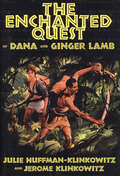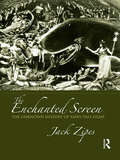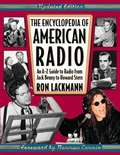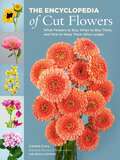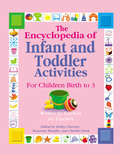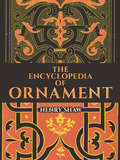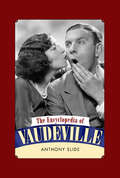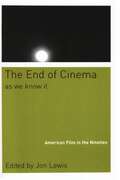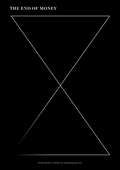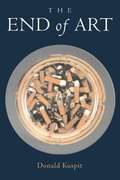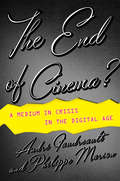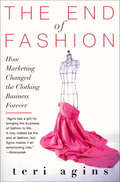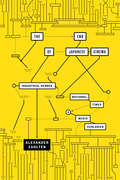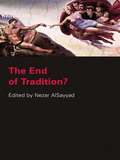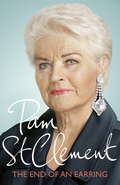- Table View
- List View
The Empty Place: Democracy and Public Space
by Teresa HoskynsIn The Empty Place: Democracy and Public Space Teresa Hoskyns explores the relationship of public space to democracy by relating different theories of democracy in political philosophy to spatial theory and spatial and political practice. Establishing the theoretical basis for the study of public space, Hoskyns examines the rise of representative democracy and investigates contemporary theories for the future of democracy, focusing on the Chantal Mouffe's agonistic model and the civil society model of Jürgen Habermas. She argues that these models of participatory democracy can co-exist and are necessarily spatial. The book then provides diverse perspectives on how the role of physical public space is articulated through three modes of participatory spatial practice. The first focuses on issues of participation in architectural practice through a set of projects exploring the ‘open spaces’ of a postwar housing estate in Euston. The second examines the role of space in the construction of democratic identity through a feminist architecture/art collective, producing space through writing, performance and events. The third explores participatory political democratic practice through social forums at global, European and city levels. Hoskyns concludes that participatory democracy requires a conception of public space as the empty place, allowing different models and practices of democracy to co-exist.
The Enchanted Quest of Dana and Ginger Lamb
by Jerome Klinkowitz Julie Huffman-klinkowitzBestselling authors, sensational lecturers, documentary filmmakers, amateur archaeologists, spies for FDR—Dana and Ginger Lamb led the life of Indiana Jones long before the movie icon was ever scripted. “We blaze the trail,” Ginger said, “and the scientists follow.” The Enchanted Quest of Dana and Ginger Lamb is the first biography of this captivating, entrepreneurial couple. In southern California, they started married life in 1933 by building a canoe. With only $4.10 in their pockets, they paddled to Central America and through the Panama Canal. Three years later they returned triumphant, bearing a photographic record of the amazing trek that made them famous. After releasing their bestselling book, Enchanted Vagabonds, the two became exactly that. They relentlessly lectured for the public and mooned for the media until they were able to fund more exotic voyages to remote jungles and rivers. So convincing were they on the circuit that their most powerful fan, President Franklin Roosevelt, coerced J. Edgar Hoover into hiring the Lambs as spies in Mexico. After World War II, they launched their Quest for the Lost City, which yielded another book and documentary. Drawing on historical records, the Lambs' books and letters, and recently declassified espionage documents, biographers Julie Huffman-klinkowitz and Jerome Klinkowitz show how the Lambs succeeded in marketing their conquests and films to armchair explorers around the world and how they became, in popular imagination, the quintessential American adventurers.
The Enchanted Screen: The Unknown History of Fairy-Tale Films
by Jack ZipesThe Enchanted Screen: The Unknown History of Fairy-Tale Films offers readers a long overdue, comprehensive look at the rich history of fairy tales and their influence on film, complete with the inclusion of an extensive filmography compiled by the author. With this book, Jack Zipes not only looks at the extensive, illustrious life of fairy tales and cinema, but he also reminds us that, decades before Walt Disney made his mark on the genre, fairy tales were central to the birth of cinema as a medium, as they offered cheap, copyright-free material that could easily engage audiences not only though their familiarity but also through their dazzling special effects. Since the story of fairy tales on film stretches far beyond Disney, this book, therefore, discusses a broad range of films silent, English and non-English, animation, live-action, puppetry, woodcut, montage (Jim Henson), cartoon, and digital. Zipes, thus, gives his readers an in depth look into the special relationship between fairy tales and cinema, and guides us through this vast array of films by tracing the adaptations of major fairy tales like "Little Red Riding Hood," "Cinderella," "Snow White," "Peter Pan," and many more, from their earliest cinematic appearances to today. Full of insight into some of our most beloved films and stories, and boldly illustrated with numerous film stills, The Enchanted Screen, is essential reading for film buffs and fans of the fairy tale alike.
The Encyclopaedic Dictionary in the Eighteenth Century: Architecture, Arts and Crafts (Routledge Revivals #Vol. 5)
by Terence M. RussellFirst published in 1997, this volume examines two of Sir Francis Bacon’s civil essays, Sir Henry Wotton’s The Elements of Architecture and John Harris’ Lexicon Technicum parts I and II.
The Encyclopedia Of Drawing Techniques
by Running Press Staff Neil Philip Hazel HarrisonTo draw well depends on three things: observation, knowing how you want to translate what you see, and the physical ability to draw what you want. Here’s a complete course in the art of drawing, from core sections on pencil and pastel to the more esoteric techniques of sfumato and gestural drawing. More than 50 drawing techniques are shown in clear, detailed, step-by-step photography, plus a comprehensive overview of digital drawing techniques, with directions for modifying digital drawings using a visual effects wheel. ENCYCLOPEDIA OF DRAWING TECHNIQUES also features an inspirational gallery of some of the world’s finest drawings, demonstrating the full range of techniques in context.
The Encyclopedia Shatnerica: An A to Z Guide to the Man and His Universe
by Robert SchnakenbergTHE DEFINITIVE BIOGRAPHY OF WILLIAM SHATNER IS BACK--IN A SUPER-EXPANDED MILLENNIUM EDITION! This updated edition of The Encyclopedia Shatnerica is your complete guide to the life and work of William Shatner--actor, singer, writer, director, horseman, game show host, and legendary Hollywood lothario. Hop aboard the Starship Irreverent as certified "Shatnerologist" Robert Schnakenberg documents every aspect of The Great One's career, including: * More than fifty years of major film, TV, and stage appearances--from The Twilight Zone and Star Trek to T. J. Hooker and Boston Legal * Shatner's many musical misadventures--including his legendary covers of "Rocket Man" and "Lucy in the Sky with Diamonds" * Scandalous allegations and scathing anecdotes from Star Trek costars Plus more girdle, divorce, and toupee trivia than you can shake a phaser at! Fully updated for the first time in ten years, with all-new material on Denny Crane, Nerine Kidd, Iron Chef USA, and more, The Encyclopedia Shatnerica remains the definitive biography of an entertainment icon.
The Encyclopedia of American Radio: An A-Z Guide to Radio from Jack Benny to Howard Stern
by Ron LackmannRadio shows, personalities, chronology of radio events in the US and Canada, sponsors, vintage radio clubs, stations that feature vintage radio, logs of dramatic anthology shows
The Encyclopedia of Cut Flowers: What Flowers to Buy, When to Buy Them, and How to Keep Them Alive Longer
by Calvert CraryFrom Calvert Crary and Bruce Littlefield, The Encyclopedia of Cut Flowers is a comprehensive, gorgeously visual guide that answers every question you've ever had (and a few you didn't know to ask!) about buying, caring for, and prolonging the lives of more than 140 different varieties of commonly available cut flowers.The Encyclopedia of Cut Flowers dives deep into the world of fresh-cut flowers, featuring unique entries for 143 different varieties of commonly available cut flowers that readers can buy at their local grocery store or flower market. Each flower entry offers authoritative tips for conditioning methods (eg–cut flowers should never be put near fresh fruit because fruit produces ethylene gas which will shorten the flowers' life), as well as scientific and common names, best seasons for buying (eg—lilies in spring, dahlias in summer) and fascinating facts about each bloom. An introductory section offers basic tips for styling arrangements at home, and for keeping flowers hydrated and alive for as long as possible. By the time readers are done flipping through the pages of The Encyclopedia of Cut Flowers, which features more than 150 gorgeous color photographs of flowers, they'll be experts in the field!
The Encyclopedia of Infant and Toddler Activities: For Children Birth to 3
by Kathy Charner Maureen Murphy Charlie ClarkWith over three hundred activities written specifically for infants and toddlers, this book will captivate children's imaginations and create wonderful opportunities for learning. The result of a nationwide contest, these activities were selected as the best of the best and are written by teachers, directors, and caregivers. Organized by time of day, teachers will love the easy-to-use format. Covering areas such as arrival and departure time, clean up, and transitions, the activities span a variety of developmental areas, including language, sensory, cognitive, social-emotional, and motor skills. Approved by teachers and loved by children, this resource is sure to be a classroom favorite.
The Encyclopedia of Monograms: Over 11,000 Motifs For Designers, Artists, And Crafters
by Leonard G. LeeMonograms, once indicators of social or commercial exclusiveness, are now symbols of creativity, testaments to the idea that everyone deserves to individualize his or her own things. The remarkable Encyclopedia of Monograms--filled with over 11,000 handsomely engraved initials, ciphers, crests, insignias, emblems, badges, and shields--is a resource of fantastic scope that will be useful to anyone working in the field of graphic design, both as a compendium of the very best monogramming work of the past, and as an inspiration to create new work, commercial and artistic. From elaborate Gothic figures, to restrained Victorian creations, to elegant, floral Art Nouveau triumphs, The Encyclopedia of Monograms offers an exhaustive array of decorative marks sure to influence original and unforgettable designs.
The Encyclopedia of Ornament
by Henry ShawFirst published in 1842, this volume made an important contribution to the nineteenth-century Gothic Revival, during which English artists rediscovered decorative styles from their country's medieval past. Few published sources of the Victorian era offered information on historic designs, and The Encyclopedia of Ornament was warmly received and widely praised for the meticulous rendering of its plates. Modern-day graphic artists and designers, art historians, and students of the history of style and decoration will likewise prize this extensive treasury of authentic designs. Arranged in chronological order, this richly illustrated compilation traces a long history of ornamentation: ironwork of the thirteenth century; painted tiles of the thirteenth and fifteenth centuries; wood carvings and panels of the fifteenth and sixteenth centuries; fifteenth-century ornamental drapery; sixteenth-century book bindings; designs for jewelry, plate, and other decorative items by Hans Holbein and his contemporaries; lace and needlework of the seventeenth century; and architectural ornaments and stained glass of various periods from English and French cathedrals.
The Encyclopedia of Vaudeville
by Anthony SlideThe Encyclopedia of Vaudeville provides a unique record of what was once America's preeminent form of popular entertainment from the late 1800s through the early 1930s. It includes entries not only on the entertainers themselves, but also on those who worked behind the scenes, the theatres, genres, and historical terms. Entries on individual vaudevillians include biographical information, samplings of routines and, often, commentary by the performers. Many former vaudevillians were interviewed for the book, including Milton Berle, Block and Sully, Kitty Doner, Fifi D'Orsay, Nick Lucas, Ken Murray, Fayard Nicholas, Olga Petrova, Rose Marie, Arthur Tracy, and Rudy Vallee. Where appropriate, entries also include bibliographies. The volume concludes with a guide to vaudeville resources and a general bibliography. Aside from its reference value, with its more than five hundred entries, The Encyclopedia of Vaudeville discusses the careers of the famous and the forgotten. Many of the vaudevillians here, including Jack Benny, George Burns and Gracie Allen, Jimmy Durante, W. C. Fields, Bert Lahr, and Mae West, are familiar names today, thanks to their continuing careers on screen. At the same time, and given equal coverage, are forgotten acts: legendary female impersonators Bert Savoy and Jay Brennan, the vulgar Eva Tanguay with her billing as “The I Don't Care Girl,” male impersonator Kitty Doner, and a host of “freak” acts.
The End Of Cinema As We Know It: American Film in the Nineties
by Jon LewisThirty-four essays that take a serious look at the state of modern cinemaAlmost half a century ago, Jean-Luc Godard famously remarked, "I await the end of cinema with optimism." Lots of us have been waiting forand wondering aboutthis prophecy ever since. The way films are made and exhibited has changed significantly. Films, some of which are not exactly "films" anymore, can now be projected in a wide variety of wayson screens in revamped high tech theaters, on big, high-resolution TVs, on little screens in minivans and laptops. But with all this new gear, all these new ways of viewing films, are we necessarily getting different, better movies? The thirty-four brief essays in The End of Cinema as We Know It attend a variety of topics, from film censorship and preservation to the changing structure and status of independent cinemafrom the continued importance of celebrity and stardom to the sudden importance of alternative video. While many of the contributors explore in detail the pictures that captured the attention of the nineties film audience, such as Jurassic Park, Eyes Wide Shut, South Park: Bigger, Longer and Uncut, The Wedding Banquet, The Matrix, Independence Day, Gods and Monsters, The Nutty Professor, and Kids, several essays consider works that fall outside the category of film as it is conventionally definedthe home "movie" of Pamela Anderson and Tommy Lee's honeymoon and the amateur video of the LAPD beating of Rodney King. Examining key films and filmmakers, the corporate players and industry trends, film styles and audio-visual technologies, the contributors to this volume spell out the end of cinema in terms of irony, cynicism and exhaustion, religious fundamentalism and fanaticism, and the decline of what we once used to call film culture. Contributors include: Paul Arthur, Wheeler Winston Dixon, Thomas Doherty, Thomas Elsaesser, Krin Gabbard, Henry Giroux, Heather Hendershot, Jan-Christopher Hook, Alexandra Juhasz, Charles Keil, Chuck Klienhans, Jon Lewis, Eric S. Mallin, Laura U. Marks, Kathleen McHugh, Pat Mellencamp, Jerry Mosher, Hamid Naficy, Chon Noriega, Dana Polan, Murray Pomerance, Hillary Radner, Ralph E. Rodriguez, R.L. Rutsky, James Schamus, Christopher Sharrett, David Shumway, Robert Sklar, Murray Smith, Marita Sturken, Imre Szeman, Frank P. Tomasulo, Maureen Turim, Justin Wyatt, and Elizabeth Young.
The End Of Money
by David Weiss Dieter Roelstraete Peter Fischli Donatien Grau Dessislava DimovaThis digital publication (with a limited print edition of 100) accompanies the exhibition The End of Money (22 May - 7 August 2011).
The End of Art
by Donald KuspitIn The End of Art, Donald Kuspit argues that art is over because it has lost its aesthetic import. Art has been replaced by 'postart', a term invented by Alan Kaprow, as a new visual category that elevates the banal over the enigmatic, the scatological over the sacred, cleverness over creativity. Tracing the demise of aesthetic experience to the works and theory of Marcel Duchamp and Barnett Newman, Kuspit argues that devaluation is inseparable from the entropic character of modern art, and that anti-aesthetic postmodern art is its final state. In contrast to modern art, which expressed the universal human unconscious, postmodern art degenerates into an expression of narrow ideological interests. In reaction to the emptiness and stagnancy of postart, Kuspit signals the aesthetic and human future that lies with the New Old Masters. The End of Art points the way to the future for the visual arts.
The End of Automobile Dependence: How Cities are Moving Beyond Car-Based Planning
by Jeffrey Kenworthy Peter NewmanCities will continue to accommodate the automobile, but when cities are built around them, the quality of human and natural life declines. Current trends show great promise for future urban mobility systems that enable freedom and connection, but not dependence. We are experiencing the phenomenon of peak car use in many global cities at the same time that urban rail is thriving, central cities are revitalizing, and suburban sprawl is reversing. Walking and cycling are growing in many cities, along with ubiquitous bike sharing schemes, which have contributed to new investment and vitality in central cities including Melbourne, Seattle, Chicago, and New York. We are thus in a new era that has come much faster than global transportation experts Peter Newman and Jeffrey Kenworthy had predicted: the end of automobile dependence. In The End of Automobile Dependence, Newman and Kenworthy look at how we can accelerate a planning approach to designing urban environments that can function reliably and conveniently on alternative modes, with a refined and more civilized automobile playing a very much reduced and manageable role in urban transportation. The authors examine the rise and fall of automobile dependence using updated data on 44 global cities to better understand how to facilitate and guide cities to the most productive and sustainable outcomes. This is the final volume in a trilogy by Newman and Kenworthy on automobile dependence (Cities and Automobile Dependence in 1989 and Sustainability and Cities: Overcoming Automobile Dependence in 1999). Like all good trilogies this one shows the rise of an empire, in this case that of the automobile, the peak of its power, and the decline of that empire.
The End of Cinema?
by André Gaudreault Timothy Barnard Philippe MarionIs a film watched on a video screen still cinema? Have digital compositing, motion capture, and other advanced technologies remade or obliterated the craft? Rooted in their hypothesis of the "double birth of media," André Gaudreault and Philippe Marion take a positive look at cinema's ongoing digital revolution and reaffirm its central place in a rapidly expanding media landscape.The authors begin with an overview of the extreme positions held by opposing camps in the debate over cinema: the "digitalphobes" who lament the implosion of cinema and the "digitalphiles" who celebrate its new, vital incarnation. Throughout, they remind readers that cinema has never been a static medium but a series of processes and transformations powering a dynamic art. From their perspective, the digital revolution is the eighth major crisis in the history of motion pictures, with more disruptions to come. Brokering a peace among all sides, Gaudreault and Marion emphasize the cultural practice of cinema over rigid claims on its identity, moving toward a common conception of cinema to better understand where it is headed next.
The End of Cinema?: A Medium in Crisis in the Digital Age (Film and Culture Series)
by André Gaudreault Philippe MarionIs a film watched on a video screen still cinema? Have digital compositing, motion capture, and other advanced technologies remade or obliterated the craft? Rooted in their hypothesis of the "double birth of media," André Gaudreault and Philippe Marion take a positive look at cinema's ongoing digital revolution and reaffirm its central place in a rapidly expanding media landscape.The authors begin with an overview of the extreme positions held by opposing camps in the debate over cinema: the "digitalphobes" who lament the implosion of cinema and the "digitalphiles" who celebrate its new, vital incarnation. Throughout, they remind readers that cinema has never been a static medium but a series of processes and transformations powering a dynamic art. From their perspective, the digital revolution is the eighth major crisis in the history of motion pictures, with more disruptions to come. Brokering a peace among all sides, Gaudreault and Marion emphasize the cultural practice of cinema over rigid claims on its identity, moving toward a common conception of cinema to better understand where it is headed next.
The End of Fashion: How Marketing Changed the Clothing Game Forever
by Teri AginsA Wall Street Journal reporter’s account of the radical transformation of the fashion industry, “filled with insider details” (Library Journal).The time when fashion was defined by French designers whose clothes could be afforded only by the elite has ended. Now designers take their cues from mainstream consumers and creativity is channeled more into mass-marketing clothes than into designing them. In The End of Fashion, Wall Street Journal reporter Teri Agins astutely explores this seminal change, laying bare all aspects of the fashion industry from manufacturing, retailing, and licensing to image making and financing. Here as well are fascinating insider vignettes that show Donna Karan fighting with financiers, the rivalry between Ralph Lauren and Tommy Hilfiger, and the commitment to haute couture that sent Isaac Mizrahi’s business spiraling.“The End of Fashion rips into the seamy underbelly of a world where marketing is king, and often the emperor has no clothes.” —Vanity Fair“Essential reading not just for ‘fashionistas,’ but anyone interested in how business really works—or fails—in this dizzying world of art, culture, entertainment, and finance.” —James B. Stewart, Pulitzer Prize winner and New York Times–bestselling author of Unscripted“Compelling.” —Publishers Weekly “It ought to be required reading for people who think they might like to be clothing designers.” —The New York Times
The End of Genre: Curations and Experiments in Intentional Discourses (Postdisciplinary Studies in Discourse)
by Brenton FaberThis book explores early new critical debates about intention, tracing how and why intention was dismissed across much humanities scholarship, and how it can be revisited and made relevant as a key formative, evaluative, and ethical concept. The author argues that the academic disinterest in intention occurred simultaneously as genre criticism and later the rhetorical interest in genre came into its own. Genre became a way to simultaneously elide and naturalize intention. The book elaborates on the pedagogical, ethical, and empirical consequences naturalizing intention through genre has had for rhetorical studies and it offers a new term, “curations” to identify discursive forms, actions, and intentions working simultaneously. Finally, he also examines the gap between the humanities and STEM fields and shows specific ways scientists and engineers have called for the humanities to become more invested in intention as both a critical and an operational concept. This book will be of interest to students and scholars of discourse studies and critical discourse analysis, rhetoric and professional communication, including those in fields such as medicine, engineering, STS and business studies.
The End of Japanese Cinema: Industrial Genres, National Times, and Media Ecologies
by Alexander ZahltenIn The End of Japanese Cinema Alexander Zahlten moves film theory beyond the confines of film itself, attending to the emergence of new kinds of aesthetics, politics, temporalities, and understandings of film and media. He traces the evolution of a new media ecology through deep historical analyses of the Japanese film industry from the 1960s to the 2000s. Zahlten focuses on three popular industrial genres: Pink Film (independently distributed softcore pornographic films), Kadokawa (big-budget productions as part of a transmedia strategy), and V-Cinema (direct-to-video films). He examines the conditions of these films' production to demonstrate how the media industry itself becomes part of the politics of the media text and to highlight the complex negotiation between media and politics, culture, and identity in Japan. Zahlten points to a different history of film, one in which a once-powerful film industry transformed into becoming only one component within a complex media-mix ecology. In so doing, Zahlten opens new paths for uncovering similar broad processes in other large media societies. A Study of the Weatherhead East Asian Institute, Columbia University
The End of Money
by David WolmanFor ages, money has meant little metal disks and rectangular slips of paper. Yet the usefulness of physical money--to say nothing of its value--is coming under fire as never before. Intrigued by the distinct possibility that cash will soon disappear, author and Wired contributing editor David Wolman sets out to investigate the future of money. . . and how it will affect your wallet. Wolman begins his journey by deciding to shun cash for an entire year--a surprisingly successful experiment (with a couple of notable exceptions). He then ventures forth to find people and technologies that illuminate the road ahead. In Honolulu, he drinks Mai Tais with Bernard von NotHaus, a convicted counterfeiter and alternative-currency evangelist whom government prosecutors have labeled a domestic terrorist. In Tokyo, he sneaks a peek at the latest anti-counterfeiting wizardry, while puzzling over the fact that banknote forgers depend on society's addiction to cash. In a downtrodden Oregon town, he mingles with obsessive coin collectors--the people who are supposed to love cash the most, yet don't. And in rural Georgia, he examines why some people feel the end of cash is Armageddon's warm-up act. After stops at the Digital Money Forum in London and Iceland's central bank, Wolman flies to Delhi, where he sees first-hand how cash penalizes the poor more than anyone--and how mobile technologies promise to change that. Told with verve and wit, The End of Money explores an aspect of our daily lives so fundamental that we rarely stop to think about it. You'll never look at a dollar bill the same again.
The End of Money
by Juan A. GaitánThis book has been conceived as a parallel reflection to the exhibition The End of Money . It includes a number of contributions that extend the exhibition proper beyond its self-contained existence in the gallery space. In this respect, it is also a vehicle through which the exhibition can find different discursive grounds for exploring the theme of the end of money, both as a literary and as an iconographic motif.
The End of Tradition?
by Nezar AlSayyadRooted in real world observations, this book questions the concept of tradition - whether contemporary globalization will prove its demise or whether there is a process of simultaneous ending and renewing. In his introduction, Nezar Alsayyad discusses the meaning of the word 'tradition' and the current debates about the 'end of tradition'. Thereafter the book is divided into three parts. The three chapters in part I explore the inextricable link between 'tradition' and 'modern', revealing the geopolitical implications of this link. Part II looks at tradition as a process of invention and here the three chapters are all concerned with the making of landscapes and landscape myths, showing how the spectacle of history can be aestheticized and naturalized. Finally, Part III shows how traditionis a regime, programmed and policed and how it has been deployed, resisted, and reworked through hegemonic struggles that seek to create both built environments and citizen-subjects.
The End of an Earring
by Pam St ClementIn January 2012, one of EastEnders' longest-serving and best-loved characters breathed her last when Pat Butcher succumbed to cancer. Her departure from the show gave actress Pam St Clement time to reflect, not only on almost 26 years playing a role that she loved, but also on her whole life.Pam's mother died when she was a baby, leaving her with a father whose life didn't really have space for a child. What followed was an itinerant childhood, with various stepmothers and foster families, before an advertisement in The Lady took 11-year-old Pamela to the farm in Devon that was to become her true home, with the 'aunts' who became her surrogate parents. Time on the farm at Dartmoor, where she discovered her love of animals, alternated with life at The Warren boarding school in West Sussex, where she discovered her passion for acting.On leaving school, Pam was unsure of what direction to take but gradually realised that acting was what she wanted to do with her life. So, in 1966, Pam took up a place at drama school. Pam settled in London and worked on stage and television throughout the sixties and seventies, before her first appearance on EastEnders in 1986 and the offer of a permanent role a few months later.This memoir is far more than simply an actor's tale. Quite apart from her fascinating and unique childhood, Pam also recalls her involvement in the women's movement of the 1970s, her lifelong love of animals and the worries about her weight that have dogged her since her teenage years. It is also a tribute to Pat Butcher, for whom Pam retains a huge affection.This incredibly warm memoir reveals the woman behind the popular EastEnders' character, a woman who, apart perhaps from her earrings, couldn't be more different from Pat.

